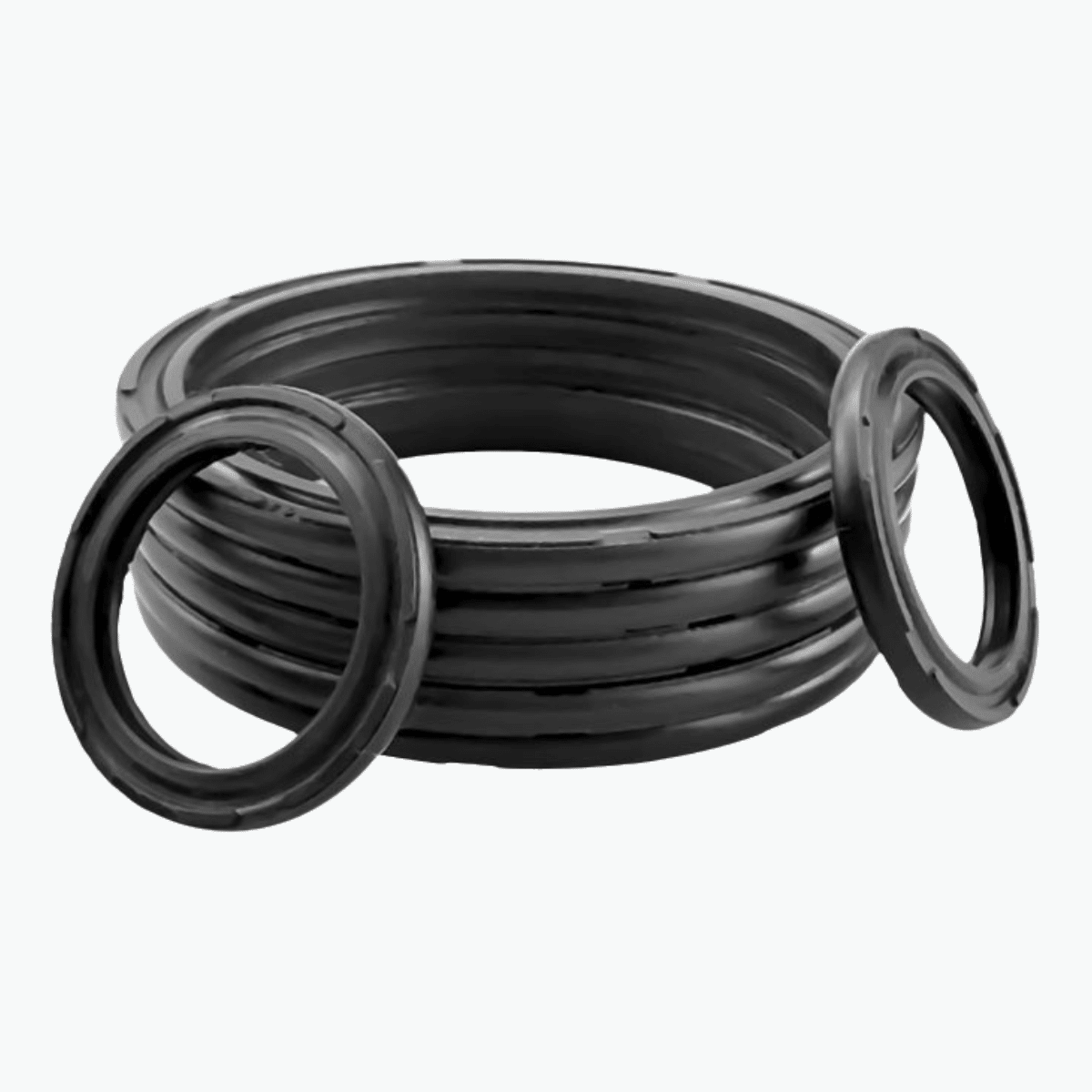Choosing the wrong seal can lead to air leaks and costly downtime.
A piston seal holds air pressure inside the cylinder; a rod seal prevents leaks along the rod. Both are critical but serve different purposes.
Here's how to select the right seal for your pneumatic application.
What’s the Main Difference Between a Piston Seal and a Rod Seal?
They operate in different areas of the cylinder.
Garnituri de piston are installed in the bore to manage chamber pressure.
Garnituri de tijă are placed at the cylinder head to stop air leakage along the moving rod.

They work together to maintain system efficiency. See the full breakdown in our pneumatic cylinder seal guide.
What Are the Key Functional Differences?
| Caracteristică | Etanșare piston | Garnitura tijei |
|---|---|---|
| Locaţie | Alezajul interior al cilindrului | Cylinder head |
| Funcţie | Seals pressure between chambers | Prevents external air leakage |
| Movement | Static or dynamic | Always dynamic |
| Failure symptoms | Blow-by, reduced stroke | Visible air leak, reduced pressure |
Consider adding garnituri ștergătoare de praf for added protection in dirty environments.
Which Materials Are Best for Each Seal?

Cele mai bune materiale pentru garnituri de piston
| Material | Benefits | Caz de utilizare |
|---|---|---|
| BNR | Flexible and low cost | General air cylinders |
| TPU | Rezistent la uzură | Automation systems |
| PTFE | Frecare scăzută | Cilindri de mare viteză |
| FKM | Heat and chemical resistance | Industrial cylinders |
More info: Piston Seal Types & Materials
Cele mai bune materiale pentru garnituri de tijă
| Material | Benefits | Caz de utilizare |
|---|---|---|
| BNR | Budget-friendly | Low-speed cylinders |
| TPU | Long service life | Heavy-duty cycles |
| FKM | Medii extreme | Chemical or high-temp use |
Explore options: Producător de inele O personalizate
When Should You Use a Piston Seal vs. a Rod Seal?
Use a piston seal for internal chamber sealing.
Use a rod seal to seal around the moving piston rod.
In most cylinders, you’ll use both. For comparison: Piston vs Rod Seal
How to Prevent Common Seal Failures?
- Utilizare PTFE sau TPU for high-speed or friction-prone systems
- Replace seals every 6–12 months
- Utilizare garnituri tampon to absorb pressure spikes
De unde să cumpărați garnituri de înaltă calitate pentru piston și tije?
Furnizăm:
- Rod seals, piston seals, buffer & wiper seals
- Materiale: NBR, TPU, FKM, PTFE
- OEM specs and custom orders
📩 E-mail: [email protected]
📞 WhatsApp: +86 17622979498
Concluzie
Rod seals stop leaks along the rod; piston seals maintain pressure in the chamber. Use both for reliable pneumatic performance.
Browse Related Guides


